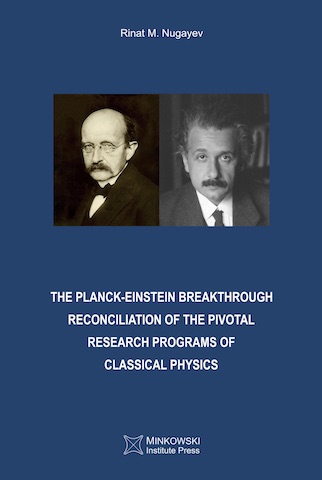 |
||||||||
|
||||||||
|
|
Description: The aim of the book is to explain why classical mechanics and classical electrodynamics were 'refuted' almost simultaneously at the beginning of the XX-th century. It is contended that the Quantum and the Relativistic revolutions were simultaneous since they had the common origin - the clash between the fundamental theories of the second half of the XIX-th century that constituted the 'body' of Classical Physics. The revolution's most dramatic turning point was Einstein's 1905 light quantum paper. Though Einstein's efforts sprung out of Max Planck's pioneering attempts to comprehend electromagnetic phenomena through the lenses of conceptual structures of statistical thermodynamics. It was Planck, who clearly realized the cross-contradiction between 'the physics of material bodies' and 'the physics of the ether' and outlined the sketch of its withdrawal: the paradigms 'must be modified to remain compatible'. And it was Planck who took the first step in modifying the physics of the ether and contending that 'not only matter itself but also the effects radiated from matter possess discontinuous properties'. Einstein's part consisted in that he took the second step in modifying the second component of the encounter - the physics of material bodies. Einstein's foolhardy light quanta hypothesis and distinctive special theory of relativity turn out to be mere milestones of the unwinding of Maxwellian electrodynamics and statistical thermodynamics reconcilement research program. The notorious conception of luminiferous ether was a substantial obstacle for Einstein's wayward statistical thermodynamics in which the pivotal lead was played by flagrant light quanta paper. Einstein was aware that his enticing light quanta hypothesis was too audacious to be taken literally and he laid out his version of 'electrodynamics of moving bodies' in a markedly Machian/ Duhemian, phenomenological way. As a result of the revision of the second scientific revolution key episode, the arguments are exhibited in favor of the necessity to modify the history of the genesis of general relativity; correspondingly, the process of unification of electromagnetic and weak interactions that took place in the second half of the XX-th century is scrutinized. Eventually, the encounter and interpenetration of the two dominating research traditions of modern physics - that of general relativity and quantum field theory - is elicited.
The physical (paper) book can be ordered from (for more options see):
|
|||||||
